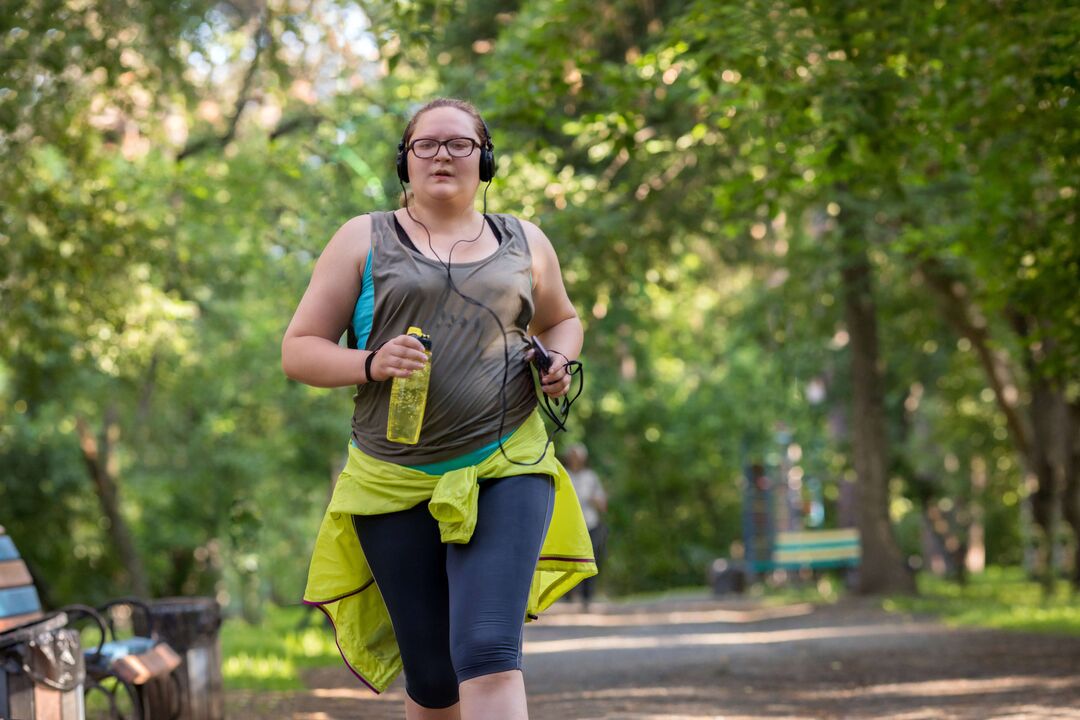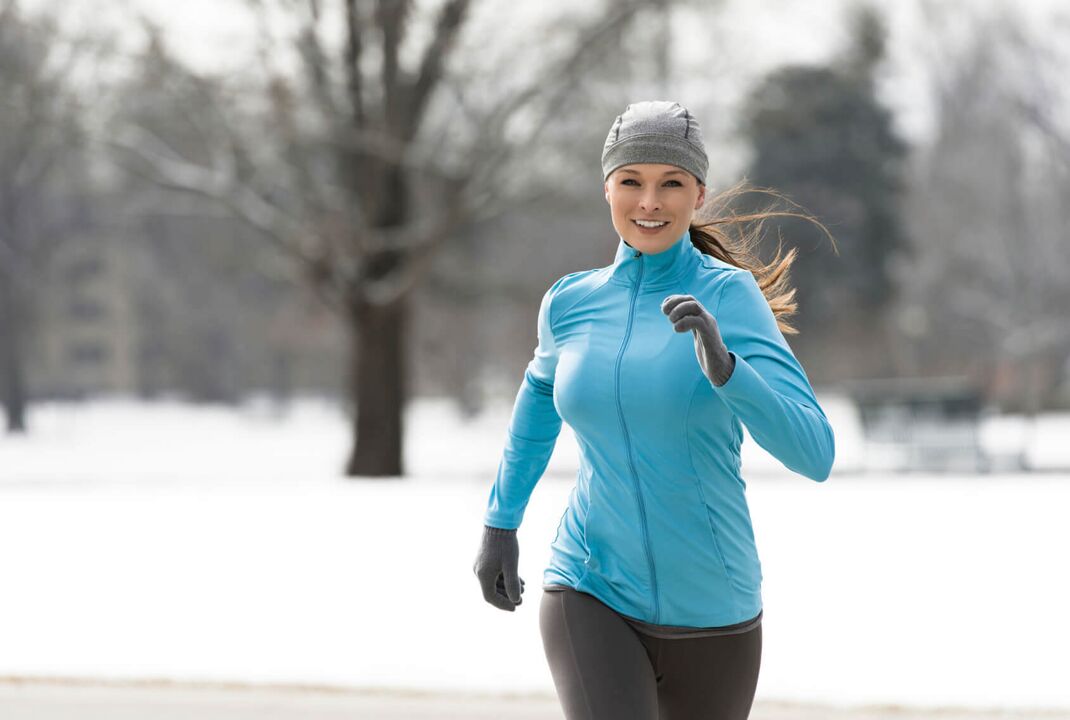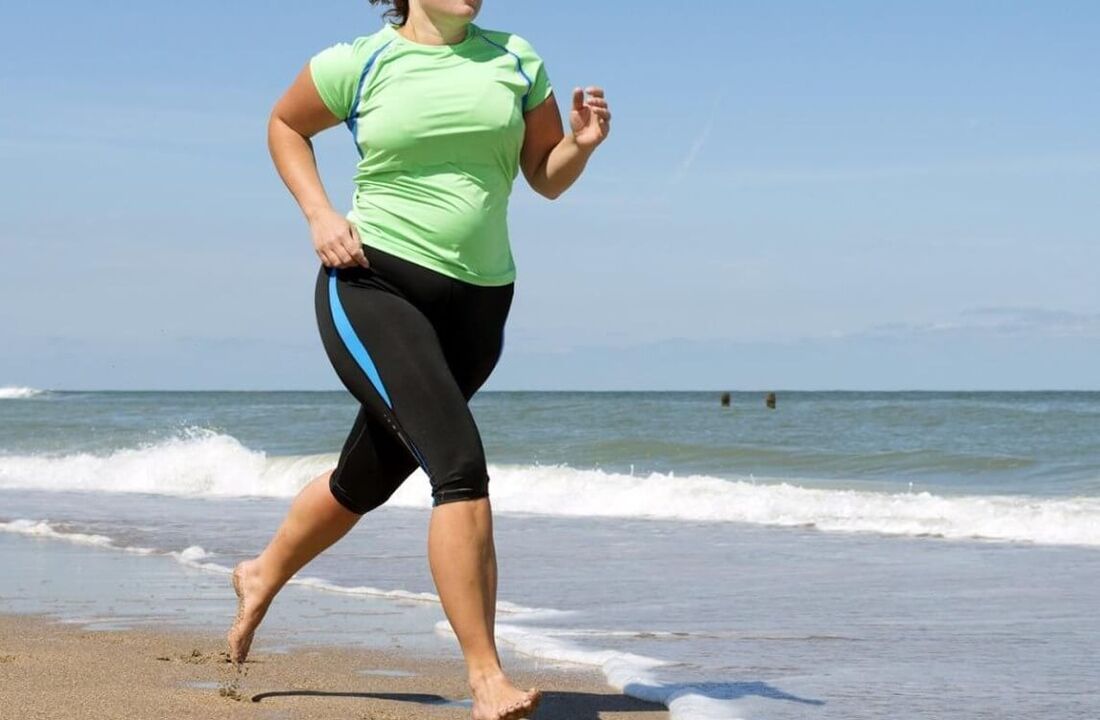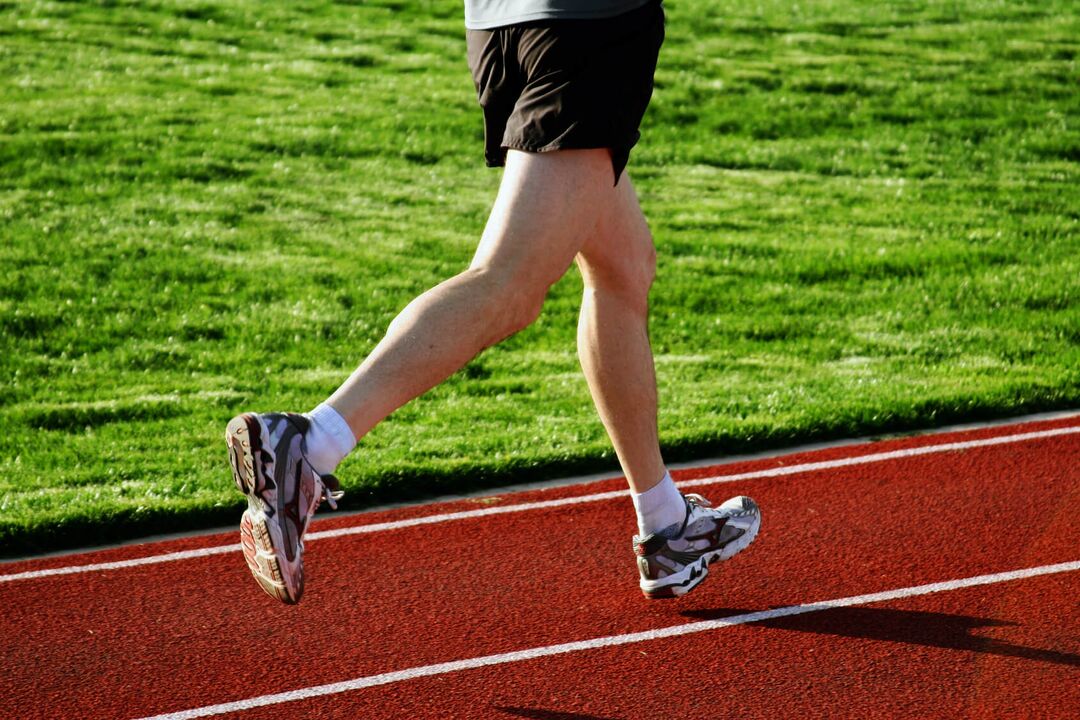Running is considered one of the most effective and affordable ways to lose weight. Therefore, most of those who lose weight and strive to lose as many kilograms as possible in a short period of time choose it. But does it really help in the fight against obesity? How do I run correctly so that training is good for my health? These and other questions are discussed in more detail in this article.

Running is quite an intense and difficult sport. Especially for people with extra pounds: the load on the spine and joints increases, unpleasant, even painful sensations appear. In addition, severe shortness of breath occurs, the pressure can rise sharply. Therefore, beginners who start training from scratch must be extremely careful and take care of their own body and well-being. There are the following basic rules:
- choose a training program, its number per week, intensity - it is better with a specialist;
- It is optimal if the training begins with a slight warm-up of the joints. It is worth paying special attention to the knees - they bear the brunt of the load during classes. Duration - 5-7 minutes;
- You need to end the workout with a light stretch to help muscles recover faster. Duration - 5-10 minutes;
- Beginners need to gradually build up their running time. The first time, 5-7 minutes of easy walking is enough.
1. 5-2 hours before jogging, you need to arrange a modest meal. It is optimal that most of this comes from protein and carbohydrates - this is the energy that the body needs during training.

What is running and why is it needed?
Running is classified as an aerobic exercise. During exercise, the body cells are actively saturated with oxygen, which brings the following benefits:
- strengthening of the cardiovascular system;
- prevention of blood clots, cholesterol plaques;
- strengthening immunity;
- increase efficiency, improve memory;
- normalization of metabolic processes;
- lowering cholesterol levels;
- general improvement in well-being.
The whole body benefits from running because of the increase in blood circulation. In addition, during a run, the "hormone of happiness" is actively released - serotonin, which improves mood and fights insomnia. Regular exercise also helps to strengthen the muscles of the legs, abdomen and hips.

What clothes are best for running in summer and winter?
Clothing for training should always be adapted to the weather, as it fulfills an important function - it regulates heat transfer. You should not focus on the season, winter or summer, but pay attention to the ambient temperature:
- From -3℃ to +10℃: thin hat or earmuffs, windbreaker or sleeveless jacket with a hood in case of rain, turtleneck or sweatshirt, t-shirt or t-shirt made of high-quality breathable material, warm pants.
- From +10℃ to +20℃: headband or baseball cap, t-shirt, light sweatshirt or windbreaker, in case of rain or strong cold wind outside, leggings or pants without insulation.
- From +20℃: T-shirt or t-shirt made of high-quality, breathable material, shorts or leggings.
- Below -3℃: hat, thermal underwear, sports jacket and warm trousers. In winter, special attention should be paid to protecting the body, do not forget a scarf and gloves.
A set of clothes should be washed regularly. To do this, it is recommended to use a hypoallergenic powder suitable for everyday use.
Choosing the right and comfortable running shoes
After clothing, shoes are the next most important component of running. The right choice of running shoes makes training not only comfortable, but also safe. The following criteria should be taken into account:
- Lightness: you should not buy sneakers with a strong, heavy platform;
- Seasonality: for the winter period you should wear fully closed shoes, in the summer you can walk in light sneakers with mesh inserts.
- Safety: The leg must be securely fixed;
- Cushioning: Running shoes should have special cushioning pads located in the middle of the foot. Usually in this place there is a notch, a small indentation.
It is better to buy shoes in a specialized store. Good running shoes last a long time while ensuring safety, convenience and comfort while running.
How to run to lose weight
In order for training to be successful, after there were no injuries, the mood has not gone away - you need to walk correctly. Distance calculation, intensity, duration - all this depends on the initial body weight of a person.
Let's take a closer look at how weight and running are related.
- If the body weight is over 110 kilograms: Intensive training is contraindicated as the risk of injury increases. It is recommended to alternate running and walking: run 80-100 meters, walk the same distance. Start with 10-15 minutes and gradually increase the duration to 30-40 minutes.
- From 85 to 110 kilograms: Light jogging is recommended. You can also combine it with walking, but in a different way. For example, two minutes of running are replaced by one minute of rest in the form of walking. The duration of the training is 20 to 40 minutes.
- From 60 to 85 kilograms: jogging without a break for up to an hour.
Don't hope that long, strenuous workouts will help you lose weight for a long time. After a week of such violence against yourself, the desire to run will disappear, classes will not lead to anything. Therefore, the schedule of runs, their intensity and duration must be carefully chosen.

Running to lose weight in legs and stomach
Fat burning doesn't start in the first few minutes of class. It is important to reach a certain stage called the aerobic zone. How to understand that she has arrived? Gives a pulse. A value of 60-70% of the maximum heart rate (MHR) is considered to be the fat burning interval. But it is not enough just to come to her, it is important to keep her for 20-30 minutes.
Maximum heart rate is calculated using a simple formula: "220 - age in years". For a girl aged 22, MCHP = 220-22 = 198.
In addition to the aerobic zone, there are others:
- Rest - 35-40% of MCHP;
- warm-up - 50-60% of MCHP;
- aerobic - 60-70% of MCHP;
- Endurance - 80-90% of MCHP;
- dangerous - 90-95% of MCHP.
Heart rate must be monitored throughout the workout. This will not only help to reduce weight, but also protect yourself from various negative consequences.
Contraindications to running for weight loss
Jogging seems to many to be a universal form of exercise that is suitable for everyone. In fact, this is far from the case. There is a list of contraindications, which includes the following points:
- joint diseases;
- pathology of the organs of the cardiovascular and respiratory systems;
- Colds and flu, especially when the temperature rises;
- Diseases in the acute phase: Active training can worsen the condition;
- Myopia, glaucoma: intense exercise can cause retinal detachment.
In addition, classes may be contraindicated for the elderly. In any case, you can walk or not - a question that everyone needs to ask only a specialist.
Technique for safe and correct running
The most important thing about running is not to harm your health. To do this, you must strictly observe the safety precautions:
- It is optimal to start with an accelerated walk and gradually move to a slow run. This makes training easier, there is no severe shortness of breath, increased heart rate.
- When jogging, the body should be slightly inclined, arms bent at the elbows.
- The amplitude of hand movements should be small, it should help and not confuse the rhythm.
- You have to breathe through your nose. If you want to inhale, inhale sharply or exhale through your mouth, you need to slow down and restore your heart rate.
- You only need to wear comfortable clothes and shoes. It should be light and not restrict movement. Women are advised to pay attention to special sports bras that will support their breasts while running.
- Every movement should be smooth and steady, as sudden jumps or steps can lead to injury.
Maintaining health and a positive result from training is possible only with strict adherence to the technique of its implementation. Otherwise, jogging can be replaced with an endless treatment.
to jog
Jogging is the most common form of exercise. It is usually slow, unhurried, and comparable in intensity to brisk walking. Such a lesson should last at least 30-40 minutes. During this time, the pulse reaches the aerobic stage, in which the process of intense calorie burning begins.
Jogging not only improves the figure, but also has a positive effect on health, improves well-being.
shuttle service
Many pendulum runs are known from school. This is a good way to diversify your usual training. Such short runs can be part of a jog or used as a warm-up exercise.
Shuttle running has a good effect on the central nervous system, improves reaction and concentration.
sprint
Sprint runs at maximum acceleration. Of course, jogging in such a rhythm cannot take about 30-40 minutes, but you can start or end an hour with such intense sections that they can be inserted every 5-7 minutes of measured jogging. This burns more calories, strengthens muscles and increases endurance.
Interval Training
Interval training is considered the most effective in the sports community. They involve alternation of work and rest, running and walking. So the body does not have time to get used to it, each new step is something new for it and requires strength. Therefore, the aerobic heart rate zone is reached much faster, and the process of intense calorie burning takes place earlier.
Below is an eight-week blended training program that begins with interval training and gradually transitions to jogging.

The best places to run
The best place for training is a specially designed one. This can be school stadiums or sports fields. Conventional asphalt is a very rough, hard surface that does not absorb well. Every step or jump is an enormous strain on the joints that even the best running shoes cannot compensate.
Another option is country roads or parks. The lack of a rough surface reduces stress on the joints, spine and makes walking safer. In addition, changing terrain, changing elevations, and various obstacles along the way can help you burn more calories by changing types of exercise.
For quick temporary weight loss, running on a treadmill is no less effective.
Ongoing training program
Increase the duration and intensity of training - it is recommended gradually. This helps the body get used to a new type of load. The table below shows the 8 week training program.
| Monday | Tuesday | the Wednesday | Thursday | Friday | Saturday | Sunday | |
|---|---|---|---|---|---|---|---|
| week 1 |
|
Rest |
|
Rest |
|
|
Rest |
| 2 weeks |
|
Rest |
|
Rest |
|
|
Rest |
| 3 week |
|
Rest |
|
Rest |
|
|
Rest |
| 4 week |
|
Rest |
|
Rest |
|
|
Rest |
| 5 week |
|
Rest |
|
Rest |
|
|
Rest |
| 6 week |
|
Rest |
|
Rest |
|
|
Rest |
| 7 week |
|
Rest |
|
Rest |
|
|
Rest |
| 8 week |
|
Rest |
|
Rest |
|
|
Rest |
*** can be skipped, finish on foot
At the end of the eighth week, the program can be restarted or switched to a one-hour jog.
How to adjust the load while running
Until the training has become constant and familiar, you need to take care of your own well-being and adjust the load during the run. This will help you find the most comfortable individual rhythm that you can maintain throughout your workout.
How to understand that the load fits the body? The first criterion is breathing. It is optimal if a person does not feel the desire to inhale or exhale heavily during training, but can hold a conversation with a jogging partner.
Another criterion is the heart rate. As already mentioned, it must be in the aerobic range.
What to do when you can't walk anymore
If you feel uncomfortable during training and want to switch from running to walking, it means that the load was initially chosen incorrectly. You must always choose the intensity and duration while focusing on your own physical data. It is better to start jogging gradually, alternating it with longer walks, but giving the body a chance to get used to a new type of activity.
If you cannot continue running, there is pain in the abdomen or joints, you must immediately stop running and restore breathing with the help of inhalations and exhalations. It is better not to stand still, but to walk slowly. This improves circulation and helps the body return to normal faster.
What to do when things get bad
If painful or unpleasant sensations appear, you need to immediately switch from running to walking, try to restore breathing, get your pulse in order and get comfortable. If the heart is still beating wildly, the eyes are darkening, dizziness or nausea appear, it is better to contact specialists, since all this can lead to a hypertensive crisis.
A doctor should also be consulted for emergency care in the event of injuries. Only a specialist focusing on X-rays can understand what caused the pain.
What to eat and drink before and after your run
Pre-workout and post-workout nutrition largely determines its effectiveness. It is particularly important to eat in the morning before exercising: the body needs enough energy to start all processes after sleep and to withstand the stress of training.
General nutritional advice:
- 15-20 minutes before training you need to eat some carbohydrates: fruit or toast from whole grain bread. The calorie content of such a meal should not be more than 200 kilocalories;
- If the training is in the evening, then you need to eat 2-3 hours before class. It can be a small piece of white diet meat (about 100-150 grams) and vegetables or an omelet;
- Before, during and after training you need to drink water in small portions. It is best to drink 100 milliliters of clean water every 15 minutes while jogging - that's several small sips;
- An hour and a half after training, you need to eat a portion of protein and fiber. Lean meats, grains and vegetables are also suitable.
Do not drink sugary beverages before or during exercise. There is only a temporary, short-lived effect, followed by a collapse.
How to breathe properly while running
Proper breathing while running is a guarantee that training will be as effective and safe as possible. General requirements:
- clean air: run away from streets, factories and industrial plants if possible;
- deep breathing: It is best to breathe in calmly and exhale straight away. Don't breathe in and out sharply, it can throw you out of rhythm and cause shortness of breath;
- Rhythm and frequency: The number of steps during inhalation and exhalation should be the same. For example, breathe in for four and breathe out for the same amount. This approach helps to find a single rhythm and make the workout longer. In addition, a constant account of fatigue distracts;
- no breath holding: lack of oxygen can cause dizziness, shortness of breath.
Beginners are advised to devote their first workouts to choosing their rhythm, calculating how often to inhale and exhale to understand how deep breathing affects well-being and the duration of the workout.
Why you need a heart rate monitor for running
As already mentioned, the heart rate is one of the main criteria that reflects the quality of the training. It is very inconvenient to independently calculate the number of heartbeats per minute while running. And the electronic device does everything by itself.
Heart rate monitors differ in appearance, but in most cases they are small, compact and light. They are attached to the wrist or chest area.
The safest workout for beginners
Beginners have many questions about jogging: do you run in the morning or in the evening, on an empty stomach or after a snack, how often a day and a week? In fact, each item is selected strictly individually, but the general safety recommendations are the same:
- Begin and end your run with walking.
- Choose comfortable shoes and clothing and be aware of the weather.
- Monitor the position of the body: do not tilt the body too much, do not make sudden movements.
- Plant your foot firmly on the surface. Don't land on your toes or heels.
- Breathe evenly and deeply.
The most important thing for a beginner is not to overdo it, otherwise the very first training can be replaced by a long treatment.
Differences in training for men and women
There are no differences between men's and women's workouts. Each person chooses their own training program, intensity and duration, based on their own physical data and state of health.
The only difference is the equipment. Women should pay special attention to choosing a special sports bra. In addition, postpartum girls may need a special spinal brace to reduce the stress on the vertebrae and intervertebral discs when walking.
When to expect results
The first results can be seen after 4-6 weeks of training. At the initial stage, there is an improvement in the condition of the skin (it becomes smoother, more elastic), muscle strengthening and a slight decrease in volume. Unfortunately, it will not be possible to remove the stomach or lose much weight in a few sessions. It takes long, arduous work, including choosing the right, balanced diet and working with a psychologist, to change eating habits and accept yourself.













































































